Solar eclipse of September 23, 1987
| Solar eclipse of September 23, 1987 | |
|---|---|
 Map | |
| Type of eclipse | |
| Nature | Annular |
| Gamma | 0.2787 |
| Magnitude | 0.9634 |
| Maximum eclipse | |
| Duration | 229 sec (3 m 49 s) |
| Coordinates | 14°18′N 138°24′E / 14.3°N 138.4°E |
| Max. width of band | 137 km (85 mi) |
| Times (UTC) | |
| Greatest eclipse | 3:12:22 |
| References | |
| Saros | 134 (42 of 71) |
| Catalog # (SE5000) | 9481 |
An annular solar eclipse occurred on September 23, 1987. A solar eclipse occurs when the Moon passes between Earth and the Sun, thereby totally or partly obscuring the image of the Sun for a viewer on Earth. An annular solar eclipse occurs when the Moon's apparent diameter is smaller than the Sun's, blocking most of the Sun's light and causing the Sun to look like an annulus (ring). An annular eclipse appears as a partial eclipse over a region of the Earth thousands of kilometres wide. Annularity was visible in the Soviet Union (today's Kazakhstan), China (including Shanghai), southwestern Mongolia, Okinawa Islands of Japan except Kume Island and the southwestern tip of Kerama Islands, the Federal States of Micronesia, Papua New Guinea, Solomon Islands, Rotuma Islands of Fiji, Wallis Islands and West Samoa (the name changed to Samoa later).
Related eclipses
Solar eclipses of 1986-1989
This eclipse is a member of a semester series. An eclipse in a semester series of solar eclipses repeats approximately every 177 days and 4 hours (a semester) at alternating nodes of the Moon's orbit.[1]
| Solar eclipse series sets from 1986-1989 | ||||
|---|---|---|---|---|
| Ascending node | Descending node | |||
| Saros | Map | Saros | Map | |
| 119 | 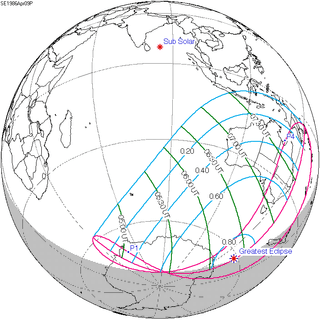 April 9, 1986 Partial |
124 | 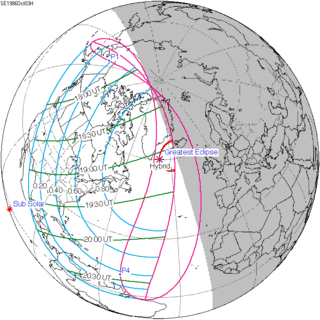 October 3, 1986 Hybrid | |
| 129 |  March 29, 1987 Hybrid |
134 |  September 23, 1987 Annular | |
| 139 | 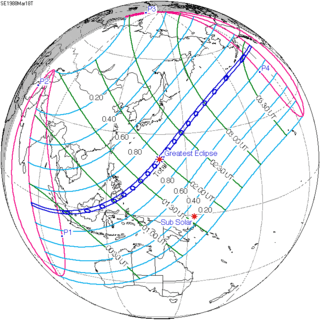 March 18, 1988 Total |
144 | 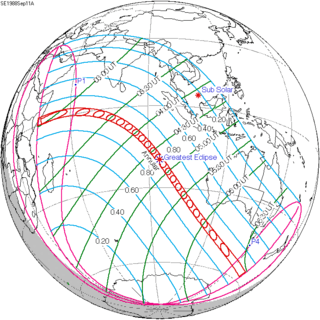 September 11, 1988 Annular | |
| 149 | 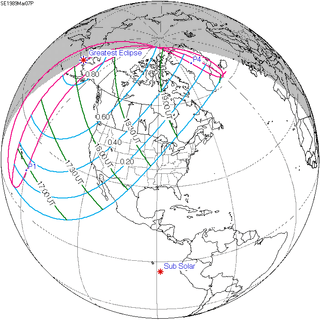 March 7, 1989 Partial |
154 | 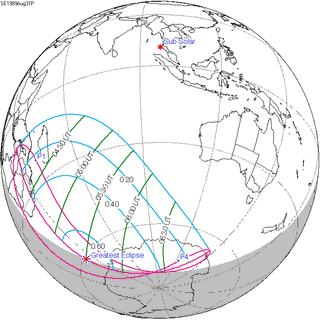 August 31, 1989 Partial | |
Saros 134
It is a part of Saros cycle 134, repeating every 18 years, 11 days, containing 71 events. The series started with partial solar eclipse on June 22, 1248. It contains total eclipses from October 9, 1428 through December 24, 1554 and hybrid eclipses from January 3, 1573 through June 27, 1843, and annular eclipses from July 8, 1861 through May 21, 2384. The series ends at member 71 as a partial eclipse on August 6, 2510. The longest duration of totality was 1 minutes, 30 seconds on October 9, 1428.[2]
| Series members 38-48 occur between 1901 and 2100: | ||
|---|---|---|
| 38 | 39 | 40 |
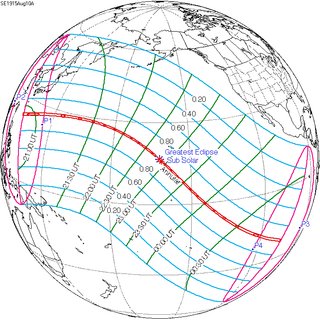 August 10, 1915 |
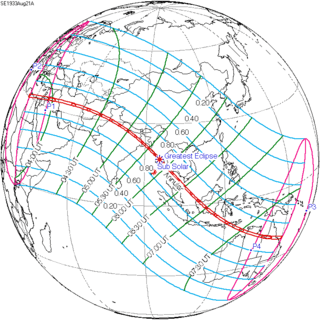 August 21, 1933 |
 September 1, 1951 |
| 41 | 42 | 43 |
 September 11, 1969 |
 September 23, 1987 |
 October 3, 2005 |
| 44 | 45 | 46 |
 October 14, 2023 |
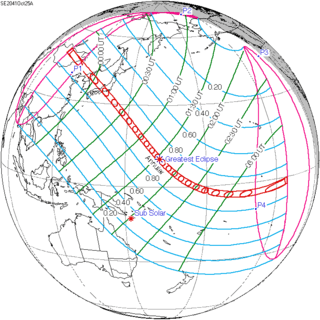 October 25, 2041 |
 November 5, 2059 |
| 47 | 48 | |
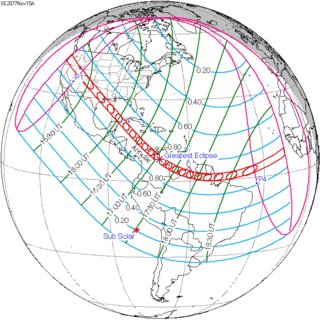 November 15, 2077 |
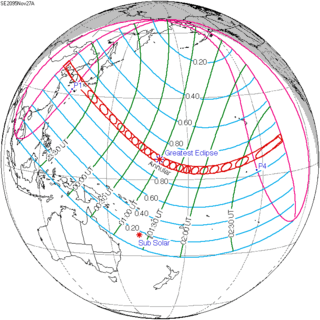 November 27, 2095 | |
Notes
- ↑ van Gent, R.H. "Solar- and Lunar-Eclipse Predictions from Antiquity to the Present". A Catalogue of Eclipse Cycles. Utrecht University. Retrieved 6 October 2018.
- ↑ http://eclipse.gsfc.nasa.gov/SEsaros/SEsaros134.html
References
- Earth visibility chart and eclipse statistics Eclipse Predictions by Fred Espenak, NASA/GSFC
| Wikimedia Commons has media related to Solar eclipse of 1987 September 11. |
